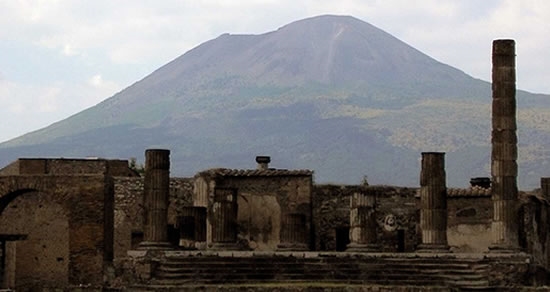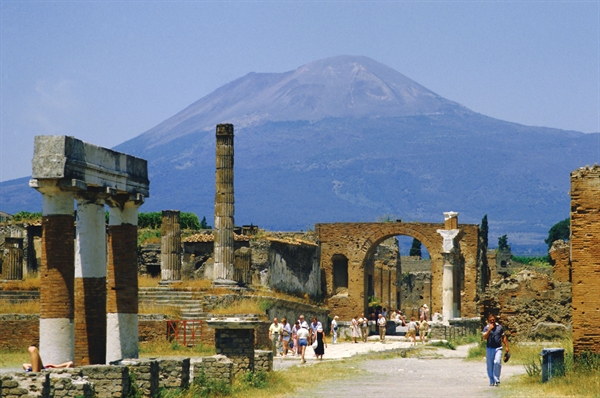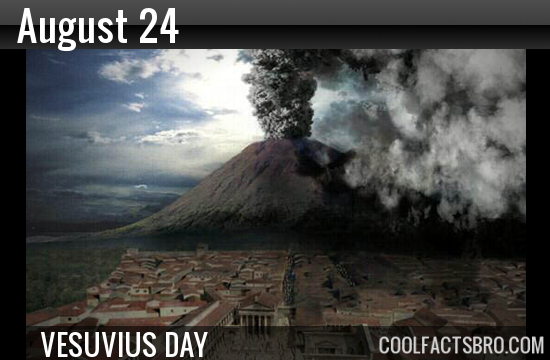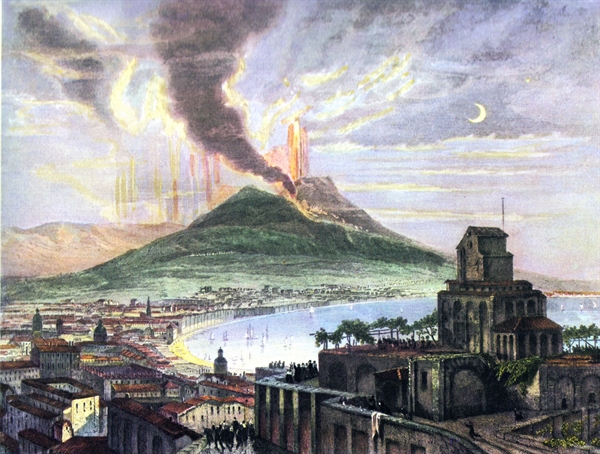Vesuvius Day 2024 is on Saturday, August 24, 2024: Smoke has been coming out of Vesuvius all day?
Saturday, August 24, 2024 is Vesuvius Day 2024. In the Shadow of Vesuvius (Picture of the Day) Mount Vesuvius looming over

Vesuvius Day remember the historic eruption of Mount Vesuvius On August 24, 79 A.D, which destroyed the town of Pompeii and surrounding areas in a single of history’s biggest recorded volcanic explosions.

If you are facing southwards then yes it will be Vesuvius but I wouldn't recommend going up there as the smoke will be poisonous and you never know if or when the volcano will erupt and you can't outrun a pyroclastic flow which moves at 700MPH.

Why did vesuvius erupt?
Mount Vesuvius has erupted many times. The famous eruption in 79 AD was preceded by numerous others in prehistory, including at least three significantly larger ones, the best known being the Avellino eruption around 1800 BC which engulfed several Bronze Age settlements.
Since 79, the volcano has also erupted repeatedly, in 172, 203, 222, possibly 303, 379, 472, 512, 536, 685, 787, around 860, around 900, 968, 991, 999, 1006, 1037, 1049, around 1073, 1139, 1150, and there may have been eruptions in 1270, 1347, and 1500. The volcano erupted again in 1631, six times in the 18th century, eight times in the 19th century (notably in 1872), and in 1906, 1929, and 1944. There has been no eruption since 1944, and none of the post-79 eruptions were as large or destructive.
The eruptions vary greatly in severity but are characterized by explosive outbursts of the kind dubbed Plinian after Pliny the Younger, the Roman writer who observed the 79 eruption, during which his uncle, the naturalist Pliny the Elder, watched with him. However, Pliny the Elder died when his boat was trapped at a port when the pumice that was floating in the water pushed his boat and stranded it on the beach. On occasion, the eruptions have been so large that the whole of southern Europe has been blanketed by ash; in 472 and 1631, Vesuvian ash fell on Constantinople (Istanbul), over 1,200 kilometers (750 mi) away. A few times since 1944, landslides in the crater raised clouds of ash dust, which caused false alarms of an eruption.
Vesuvius was formed as a result of the collision of two tectonic plates, the African and the Eurasian. The former was pushed beneath the latter, deeper into the earth. The crust material became heated until it melted, forming magma, a type of liquid rock. Because magma is less dense than the solid rock around it, it was pushed upward. Finding a weak place at the Earth's surface it broke through, producing the volcano.
Volcanic activity at Etna began about half a million years ago, with eruptions occurring beneath the sea off the coastline of Sicily.[5] 300,000 years ago, volcanism began occurring to the southwest of the present-day summit, before activity moved towards the present centre 170,000 years ago. Eruptions at this time built up the first major volcanic edifice, forming a strato-volcano in alternating explosive and effusive eruptions. The growth of the mountain was occasionally interrupted by major eruptions leading to the collapse of the summit to form calderas.
--Etna
From about 35,000 to 15,000 years ago, Etna experienced some highly explosive eruptions, generating large pyroclastic flows which left extensive ignimbrite deposits. Ash from these eruptions has been found as far away as Rome, 800 km to the north.
A crater near the Torre del Filosofo, about 450 metres below Etna's summit.
Thousands of years ago, the eastern flank of the mountain experienced a catastrophic collapse, generating an enormous landslide in an event similar to that seen in the 1980 eruption of Mount St. Helens. The landslide left a large depression in the side of the volcano, known as 'Valle del Bove' (Valley of the Ox). Research published in 2006 suggests that this occurred around 6000 BC, and caused a huge tsunami which left its mark in several places in the eastern Mediterranean. It may have been the reason that the settlement of Atlit Yam (Israel), now below sea level, was suddenly abandoned around that time.
The steep walls of the Valley have suffered subsequent collapse on numerous occasions. The strata exposed in the valley walls provide an important and easily accessible record of Etna's eruptive history.
The most recent collapse event at the summit of Etna is thought to have occurred about 2,000 years ago, forming what is known as the Piano Caldera. This caldera has been almost entirely filled by subsequent lava eruptions, but is still visible as a distinct break in the slope of the mountain near the base of the present-day summit cone.

Mt. Vesuvius visit?
We had views of Vesuvius from our hotel window; we spent a whole day at the "scavi" - excavations - and it was barely enough. The next day we took the local bus from Pompeii train station up Vesuvius. Even just the bus trip was a great experience; we stopped halfway up and bought some souvenirs from an old "codger" and his daughter who ran a tourist shop, then back in the bus and continued up the mountainside. Not far from the top, the roadway ended and we had to continue on foot on a clearly marked path. The experience was awesome - my teenage children played out Frodo casting the ring into the fire; there actually was steam coming out of the crater. The views were spectacular! What a day! Don't miss it!







